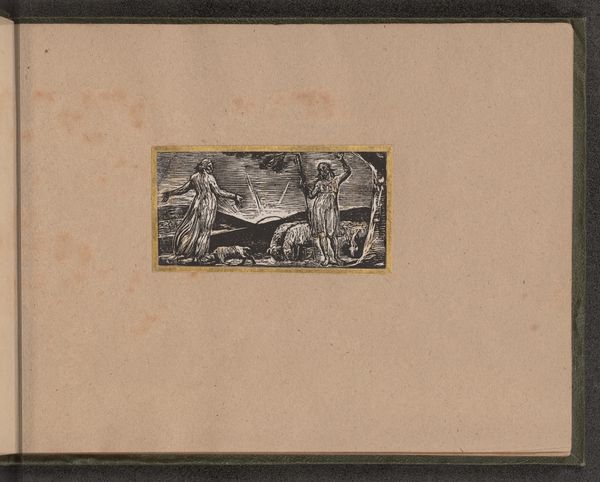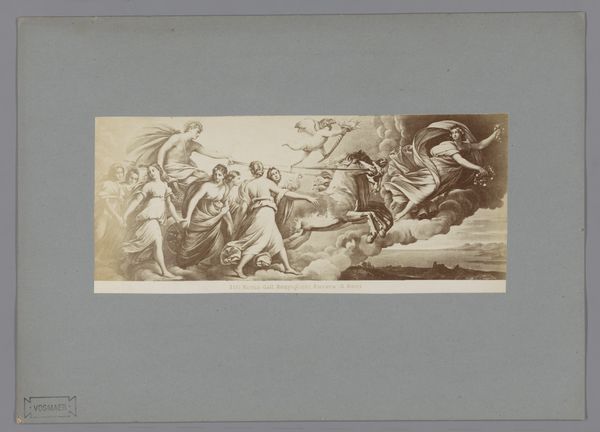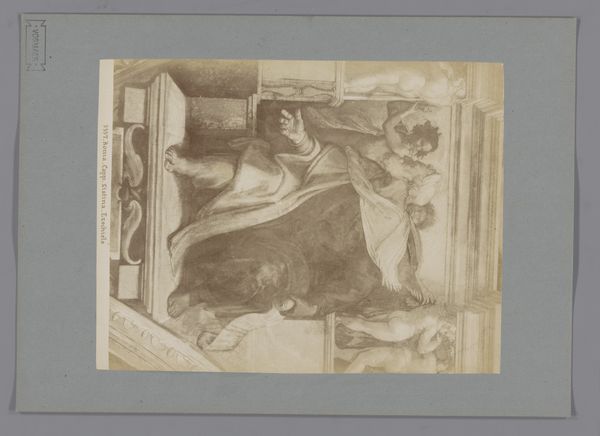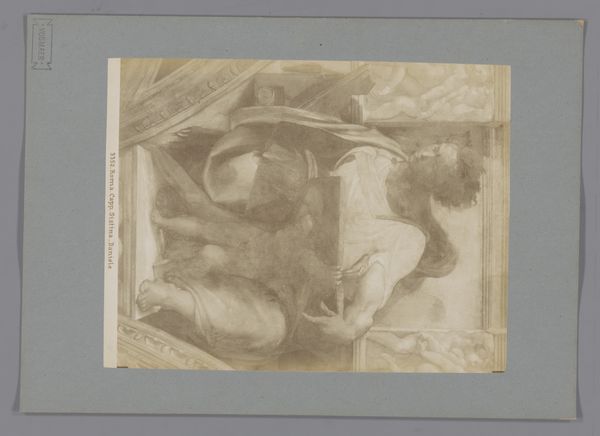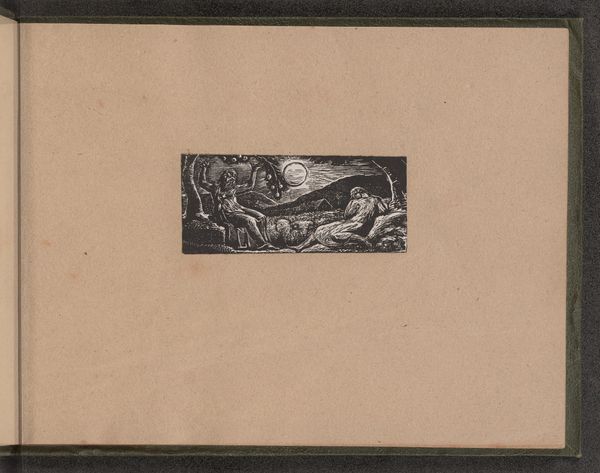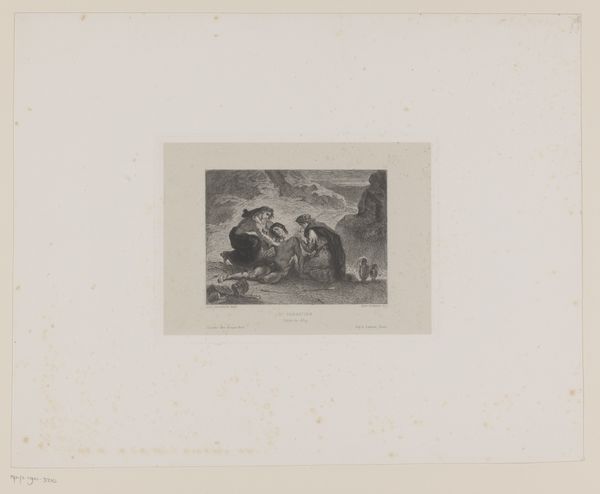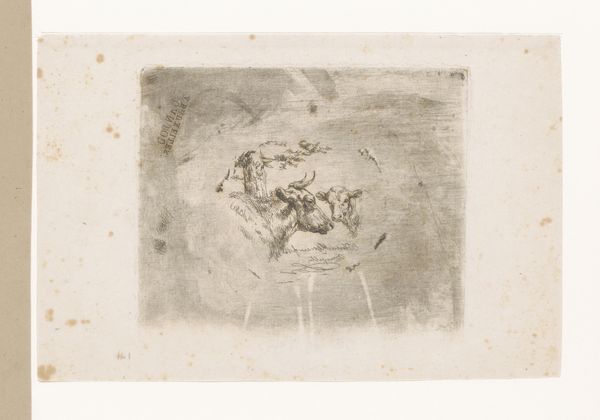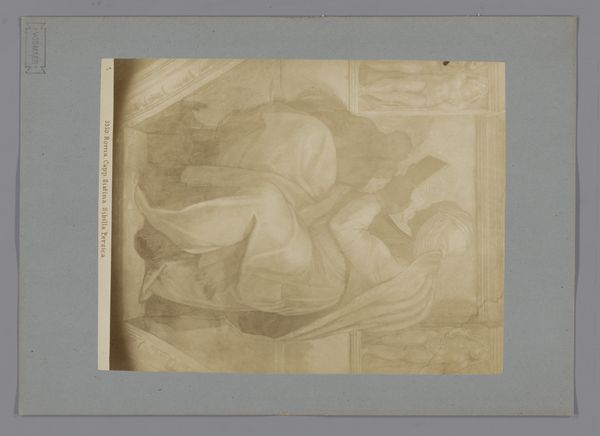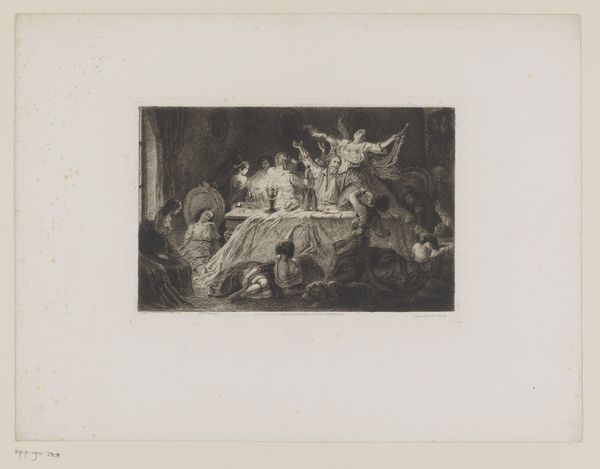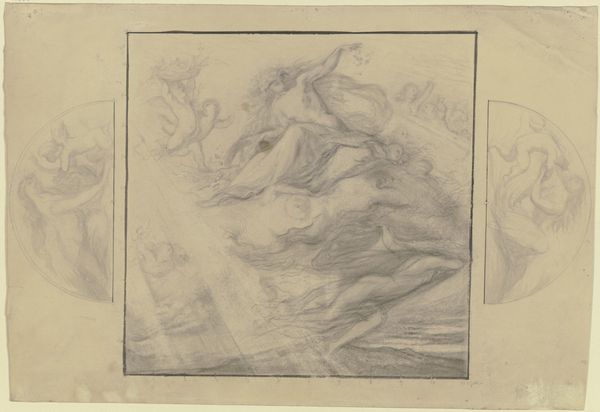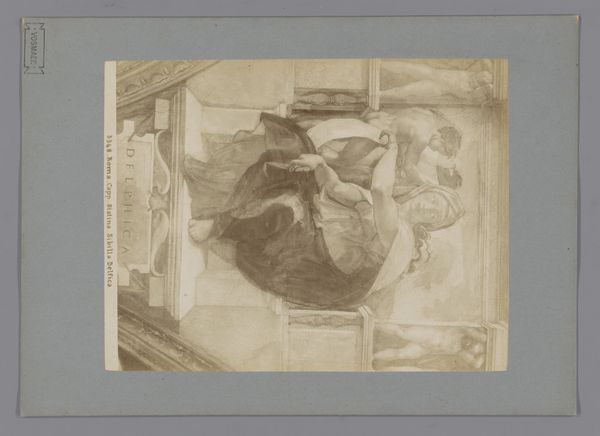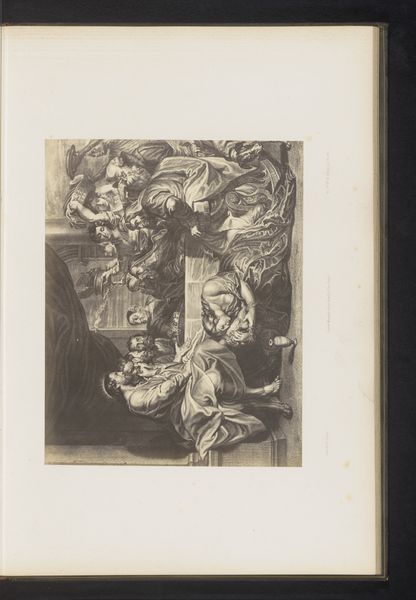
drawing, relief, sculpture
#
portrait
#
drawing
#
medieval
#
relief
#
11_renaissance
#
sculpture
#
portrait drawing
#
academic-art
#
portrait art
Dimensions: height 127 mm, width 225 mm
Copyright: Rijks Museum: Open Domain
Editor: Here we have an image titled "Detail van de tombe van paus Clemens II in de dom van Bamberg," dating roughly from 1900 to 1920. It looks like a drawing of a relief sculpture. There's a woman and what looks like a dragon in the image. The composition seems very…classical. What do you see in this piece? Curator: Well, beyond its apparent classical style, let's consider what it signifies for a woman to be rendered so peacefully alongside a dragon, especially in the context of a papal tomb. What power dynamics are at play? Does her seeming serenity belie a more complex negotiation of power and subjugation? Editor: I hadn’t thought about it like that. I just assumed it was a straightforward representation of virtue or something. Curator: Precisely! But let's push back on those assumptions. Consider the role of the Church and its historical demonization of the feminine and the pagan, often intertwined. Could this image be a subtly subversive commentary, rendered during a period of growing feminist consciousness, even within a seemingly traditional academic framework? Editor: So you're suggesting it's not just a neutral depiction, but potentially a critique of power structures? Curator: Exactly. Think about the historical construction of both woman and mythical beasts like dragons as "other" and therefore to be feared or controlled. Here, the woman appears to be in control, perhaps offering a nuanced challenge to those traditional narratives embedded within religious iconography. How do we re-imagine the story? Editor: Wow, that completely changes how I see it. It’s like the artist is using classical forms to question the very ideas they supposedly represent. It suggests a whole layer of complexity that I totally missed. Curator: Absolutely! Recognizing these potential layers allows us to engage with the work not just aesthetically, but as a dynamic participant in ongoing dialogues about gender, power, and representation. Editor: I’ll never look at a "simple" portrait drawing the same way again. Thanks for pointing out these complexities.
Comments
No comments
Be the first to comment and join the conversation on the ultimate creative platform.

